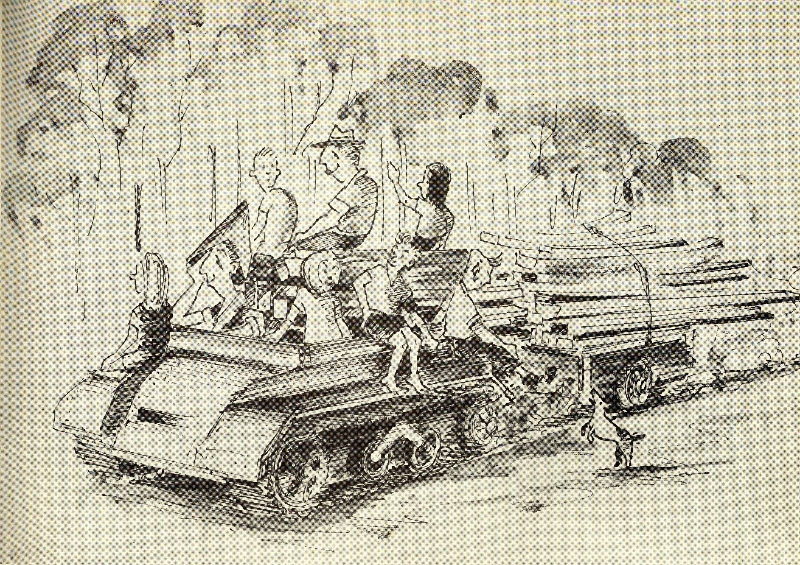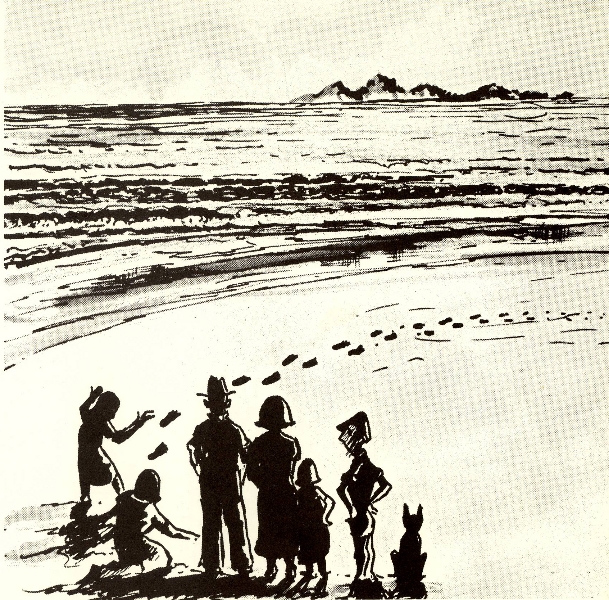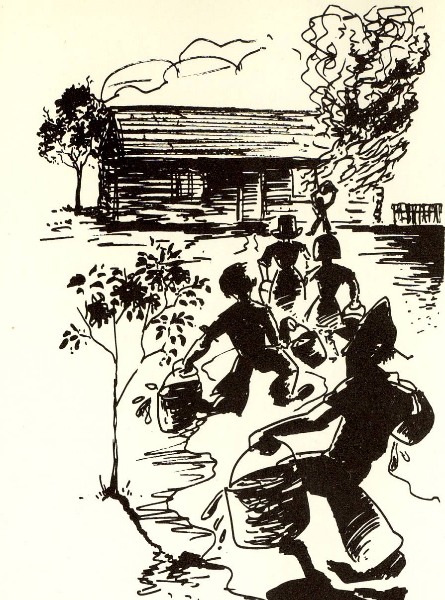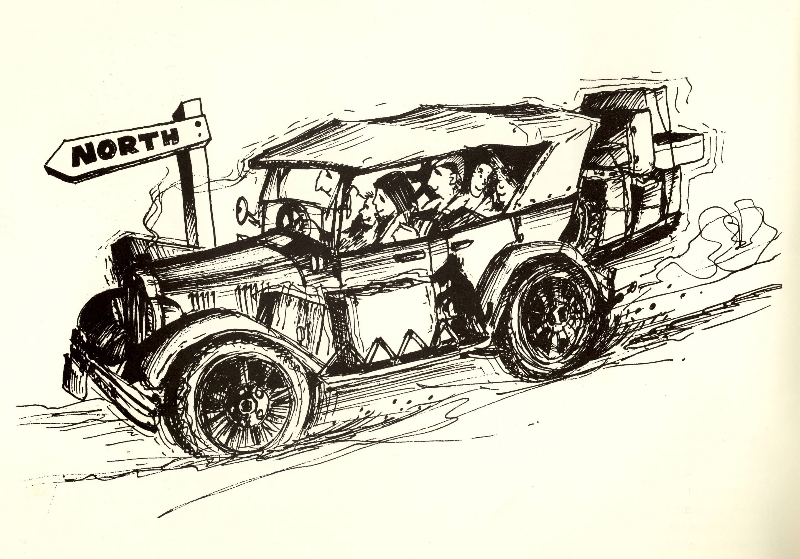Sisters Beach - recent history.
The human history of this area begins many thousands of years ago – before Tasmania was separated from the mainland. Those who first came to occupy the southernmost parts of Australia over 35,000 years ago would have traversed these hills.
A more recent history of Sisters Beach has been delightfully captured in the book In the beginning, written by the late Kenneth A. Irby. It was Ken’s family who “started a town”…
Excerpts from Ken’s writing from 1972
People used to ask, “However did you find this place?” And when we told them they would exclaim, “You came here from Hobart! No road in yet here you are, and with a log cabin, too! You built the road through that bush and those steep hillsides. Why you are modern pioneers!”
Dad was well travelled through the Tasmanian outback having been a botanical collector as well as a forestry officer. What better way of finding one of the most beautiful places in Tasmania to settle?
Land at Sisters Beach was first selected in 1872 by J. Alexander, who built a small hut at the western end of the beach. Alexander didn’t stay long. Possibly the mailman and his pony and maybe the odd fisherman from time to time were the only visitors to Sisters Creek Beach for more than six decades.
The Irby’s were the next arrivals. In 1933 we left Hobart in the 1927 Essex super-6 touring car loaded with nearly all our possessions – plus a dog and a cat. After listening for years to the wondrous tales told to us by our father of the beach “up north” which no-one wanted, we were keen to get there.
The car had to be left three miles from the beach at what we called the “top camp”. For several years we had to park it under the giant banksia trees and even after we opened the road through the rain forest it had to stay there through the long winter months. In 1933 when we arrived no such luxury (as the Pony Mail) was available. We have to walk six miles to Boat Harbour Post Office. The Pony Mail ended in the 1880’s when the coach road was opened over the hills.
The Government paid us $88 (44 pounds) to build a four-foot wide pack track into the beach. Later two more contracts of $100 each were let to widen some parts.
We built our log cabin from the stringy bark poles cut from trees growing on the banks of the creek. We named our property Thousand Hills. The creek flats were cleared with the help of pigs, who loved to dig the bracken roots. When they had done the job we fenced them out and were able to plant vegetables. The Dexter Kerry cattle, proclaimed the hardiest in the world, became our herd and this enabled us to have plenty of milk and cream – which with the vegetables, fish, and honey from our own swarms of bees, made an ideal diet. Dad’s theory was that thousands of acres of what was considered wastelands could be brought into farms and pine plantations.
People still say, “But whatever did you DO, living away down there?” Well, there was always plenty to do believe me.
Dad was a wonderful organiser. He could even make fun out of work. He would make huge kites and fly them on the beach. We had bows and arrows, too, with targets set up here and there: we formed our own archery club and invented “archery golf”, competing against each other as we shot arrows from tree to tree. Hockey sticks were cut in the bush and when friends walked in from Rulla we would have fantastic games on the beach. We even had stilts at the mouth of the creek so that kids could cross without getting our feet wet. What with swimming, fishing, hunting and horse-riding, we did pretty well.
But in 1939 after six years of hard work and little reward, the Second World War broke out. It seemed to spell “finish” to our work at Sisters Beach, and the log cabin was left empty.
Then it was 1946 and we knew peace again. Once again we reunited with Sisters Beach. We built a sawmill and used a Bren gun carrier – $100 (50 pounds) from Army Disposals to haul logs. Holiday makers loved it! While Dad started a subdivision and replanted his pine nursery and grass plots, I cut timber and built holiday homes – as well as a home for myself and Mary.
We were told that the subdivider had to name all the streets in the area (and there were fourteen of them to date). What a job! Here are a few of the names…Elfrida Avenue (after Buz), Bridge Street (that was easy), Banksia Avenue, Irby Boulevard, Stockdale Avenue, Kenelm Avenue, Alandale Place (after the title of a book Dad wrote), a short street I called Buz street, Tink Taylor Avenue (after a cobber of mine) and so it goes on.
Lake Llewellyn was established and named after Dad. Water skiers are often seen skiing over the surface which is invariably rich with the reflections of the hills and trees. The giant sea eagles sit near their nests and, I don’t doubt, wonder “What’s next”?
Gone are the pioneering days of Sisters Beach. How it has grown since Betty and i surveyed the first streets in 1948. We laid out Elfrida Ave., Bridge St., and Banksia Ave., and planned where to build the bridge. Forty years later the world has made a path to our door and the beauty of Sisters Beach is available to all.
“Images on this page are Illustrations by Stan Etherington”









